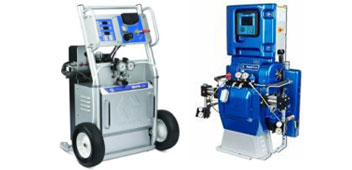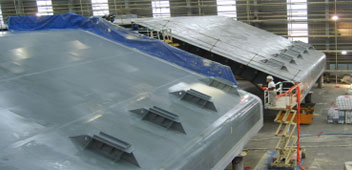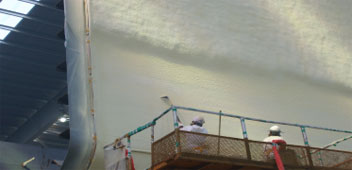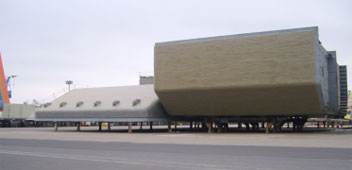Spray Type Insulation For LEG/LPG Cargo Tank
S-CRYO ®
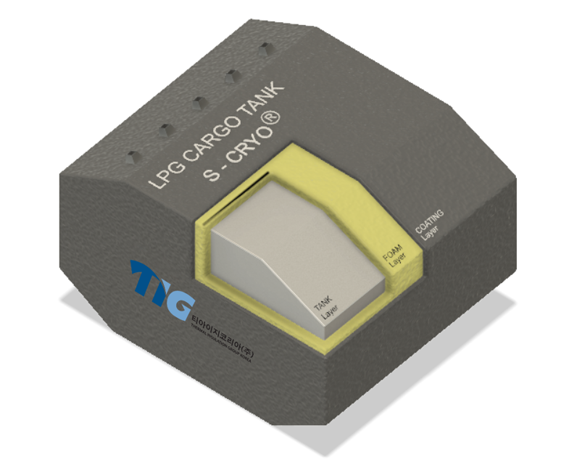
Insulation is required for LEG/LPG tank in order to protect the hull structure against adverse temperature fluctuations and withstand cryogenic temperatures. TIG’s LEG/LPG tank insulation technology incorporates two main materials of specialized spray-type polyurethane foam and polyurea coating specifically designed for the purpose of LEG/LPG cargo tank insulation. Combined with the dedicated and exclusive materials supplied from Woojo Hightech chemical company which has been developing and manufacturing polyurethane foam and coating chemicals for the insulation of liquified gas carries for over ten years, our insulation design and strategies based on extensive amount of experiences set TIG’s insulation system apart from other insulation systems.
The high quality two-component polyurethane foam and polyurea coating are dispensed from equipment specially designed to serve the purpose. The foams and coatings are sprayed on most of the areas using a mixing gun whereas a brush is used for other areas where spraying method is not suitable or less ideal.
Both materials are designed for low temperature and cryogenic condition and follow the thermal contraction and expansion of the LEG/LPG tank.
TIG’s Spray Foams & Coating insulation are developed to improve insulation efficiency, minimize maintenance and reduce application time, based on extensive experiences in working with high impact resistance polyurethane foams and coating for LEG and LPG cargo tank insulations.
TIG uses WOOJO HIGHTECH’s polyurethane foams(VESPOL®) & coating(VESCOAT®) approved by Class Society.
- Short application time at the shipyard
- HFC & HFO eco-friendly blowing agent system
- Improved weather exposure resistance during assembly
- No protection needed for outdoor storage of insulated tanks
- Improved insulation shelf-life time
- Seamless operation with enhanced quality
- Streamlined operation with enhanced quality
- Excellent thermal efficiency
- Highly resistant to fire(DIN 4102 Part1, class B2 or higher)
QUALITY CONTROL & INSPECTION POLICY
- Incoming Material Inspection
- Tank Inspection
- Chemical / Equipment Validation Test
- Pre-Application Test
- PU Inspection
- Coating Inspection
- Final Inspection
- Cool Down
